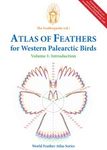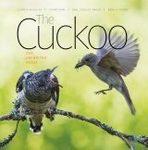By: John H Rappole(Author)
323 pages, 12 b/w photos, 24 b/w illustrations and b/w maps
Why do birds migrate, how do they do it, and why do others stay put? Renowned ornithologist John Rappole shares the latest scientific insights in this fascinating and nuanced exploration of bird behaviour.
![Bird Migration Bird Migration]()
Click to have a closer look
About this book
Contents
Customer reviews
Biography
Related titles
About this book
Bird migration captivates the human imagination, yet for most of us, key aspects of the phenomenon remain a mystery. How do birds sense the ideal moment to take wing, and once the epic journey has begun, how do they find their distant destinations? Fresh insights about avian movements are still constantly emerging, powered by new tools like molecular genetics and transmitter miniaturization.
In Bird Migration, renowned ornithologist and author John H. Rappole reveals intriguing results of recent scientific studies on migration, explaining their importance for birders, nature lovers, and researchers alike. Debunking misconceptions about the lives of birds that have persisted for thousands of years, Rappole explores unexpected causes and previously misunderstood aspects of the annual migration cycle. From the role of migrating birds in zoonotic disease transmission to climate change's impact on migration patterns, Rappole tackles crucial questions and ensures that readers come away with a new understanding of why and how birds migrate.
Contents
Preface
Acknowledgments
Chapter 1. The Bird Migration Paradigm
Chapter 2. The Migrant Annual Cycle According to the Dispersal Theory
Chapter 3. Fall Migration
Chapter 4. Wintering Period
Chapter 5. Spring Migration
Chapter 6. Breeding Period
Chapter 7. Postbreeding Period
Chapter 8. Population Biology
Chapter 9. Origin and Evolution
Chapter 10. Biogeography
Chapter 11. Conservation
Coda
Appendix 1. Common and Scientific Names of Bird Species Mentioned in the Text
Appendix 2. A Critical Examination of the Assumptions in Temperate Origins of Long-Distance Seasonal Migration in New World Songbirds by Benjamin M. Winger, F. Keith Barker, and Richard H. Ree
Appendix 3. Notation Corrections for Alan Pine's Multiple Carrying Capacity Equations from Age-Structured Periodic Breeders by Alan S. Pine in The Avian Migrant: The Biology of Bird Migration by John H. Rappole (New York: Columbia University Press, 2013)
Annotated Bibliography
Index
Customer Reviews
Biography
John H. Rappole is a research scientist emeritus at the Smithsonian Conservation Biology Institute. He is the author of numerous books, including Birds of the Mid-Atlantic Region and Where to Find Them and The Avian Migrant: The Biology of Bird Migration.
By: John H Rappole(Author)
323 pages, 12 b/w photos, 24 b/w illustrations and b/w maps
Why do birds migrate, how do they do it, and why do others stay put? Renowned ornithologist John Rappole shares the latest scientific insights in this fascinating and nuanced exploration of bird behaviour.
"John Rappole takes our beliefs about avian migration and flips them upside down, prompting the reader to reassess their own assumptions. Rappole's frank presentation of the process of scientific discovery and controversy is revealing and absorbing."
– Danielle J. Whittaker, author of The Secret Perfume of Birds: Uncovering the Science of Avian Scent
"In engaging language, the reader can expect revelations throughout that will both challenge and greatly inform. For many, their perceptions of the avian world will never be the same."
– Colin Rees, author of Nature's Calendar: A Year in the Life of a Wildlife Sanctuary
"In his insightful and thought-provoking new book, ecologist John Rappole explains that birds migrate in order to locate seasonally abundant food resources, not, as commonly assumed, because of seasonally unfavorable weather. This theory shows that most familiar migrant species evolved from resident tropical species."
– Bruce M. Beehler, author of Birds of Maryland, Delaware, and the District of Columbia
"Bird Migration is an excellent scholarly release aimed at a wide readership within the citizen science community and beyond. Rappole creates a skillful presentation of the different facets of bird migration, combining it intelligently with personal annotations of his own research contributions and enriching it with some stunning answers derived from most recent bird behavior studies."
– Karl-L Schuchmann, Zoological Research Museum Alexander Koenig


































